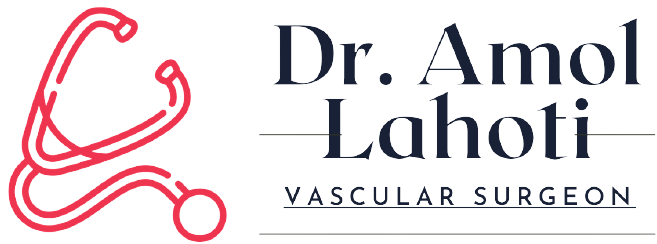Peripheral Vascular Disease
Consult our EndoVascular Expert Dr. Amol Lahoti to know whether that limb pain needs a possible treatment or not.
How can it be diagnosed by us?
We’ll ask you questions about your symptoms, and we’ll go over your medical history. After that, the vascular and interventional radiologist will perform a physical examination.
Tests may be suggested.
- Doppler Ultrasound: The severity of the peripheral arterial disease can be diagnosed and assessed using a clear, non-invasive ultrasonography doppler.
- The Ankle-Brachial Index (ABI) is a measurement of the distance between the ankle, and Another PAD screening test is the Ankle-Brachial Index (ABI). The test involves taking a blood pressure reading in the ankle and comparing it to the lesson in the shoulder.
- Angiogram (CT/MR/DSA): An angiogram is a test that determines where plaque has built up in the arteries and what treatment options are available. A CT or MRI scan, or a catheter-directed angiography, which involves putting a small tube into a street and injecting dye to see where the blockages are located, can be used to accomplish this.


Why Choose Us?
Dr. Amol Lahoti has more than 5 years of experience as a board-certified Interventional Radiologists with extensive training. In order to provide his patients with more comprehensive care alternatives, he follows the most recent universal recommendations. His mantra is “wish,” and he’s still working hard to give patients what they need.
FAQ's
Frequently Asked Question
PVD is a term commonly used to refer to Peripheral Arterial Disease (PAD), an artery disorder. It’s a long-term condition in which fatty deposits, calcium, or plaque accumulate in the walls of the arteries (Atherosclerosis). If left untreated, it can progress to arterial insufficiency, which means that blood flow through the streets is restricted, resulting in complete blockage or the production of clots.
The following terms also know as PVD:
- Legs with arterial insufficiency
- claudication
- claudication that comes and goes
In excellent health, peripheral arteries are steady and unencumbered, allowing blood to freely supply oxygen, glucose, and other nutrients to the legs. Plaque, a sticky compound of fat and cholesterol, accumulates in the peripheral arteries as we age. This sticky substance narrows and stiffens the pathway within the streets, further reducing blood flow to the organs and limbs. As plaque formation develops, clots might form, completely closing the road. If left untreated, organ damage and the loss of fingers, toes, or limbs may occur.
Blood vessel narrowing in PVD patients can be caused by either arteriosclerosis (artery hardening) or blood vessel spasms. A minor blockage in a major leg muscle, such as the calf or thigh, might produce pain while walking that may go away with rest but come back with activity: movement or operation.
In excellent health, peripheral arteries are steady and unencumbered, allowing blood to freely supply oxygen, glucose, and other nutrients to the legs. Plaque, a sticky compound of fat and cholesterol, accumulates in the peripheral arteries as we age. This sticky substance narrows and stiffens the pathway within the streets, further reducing blood flow to the organs and limbs. As plaque formation develops, clots might form, completely closing the road. If left untreated, organ damage and the loss of fingers, toes, or limbs may occur.
Blood vessel narrowing in PVD patients can be caused by either arteriosclerosis (artery hardening) or blood vessel spasms. A minor blockage in a major leg muscle, such as the calf or thigh, might produce pain while walking that may go away with rest but come back with activity: movement or operation.
